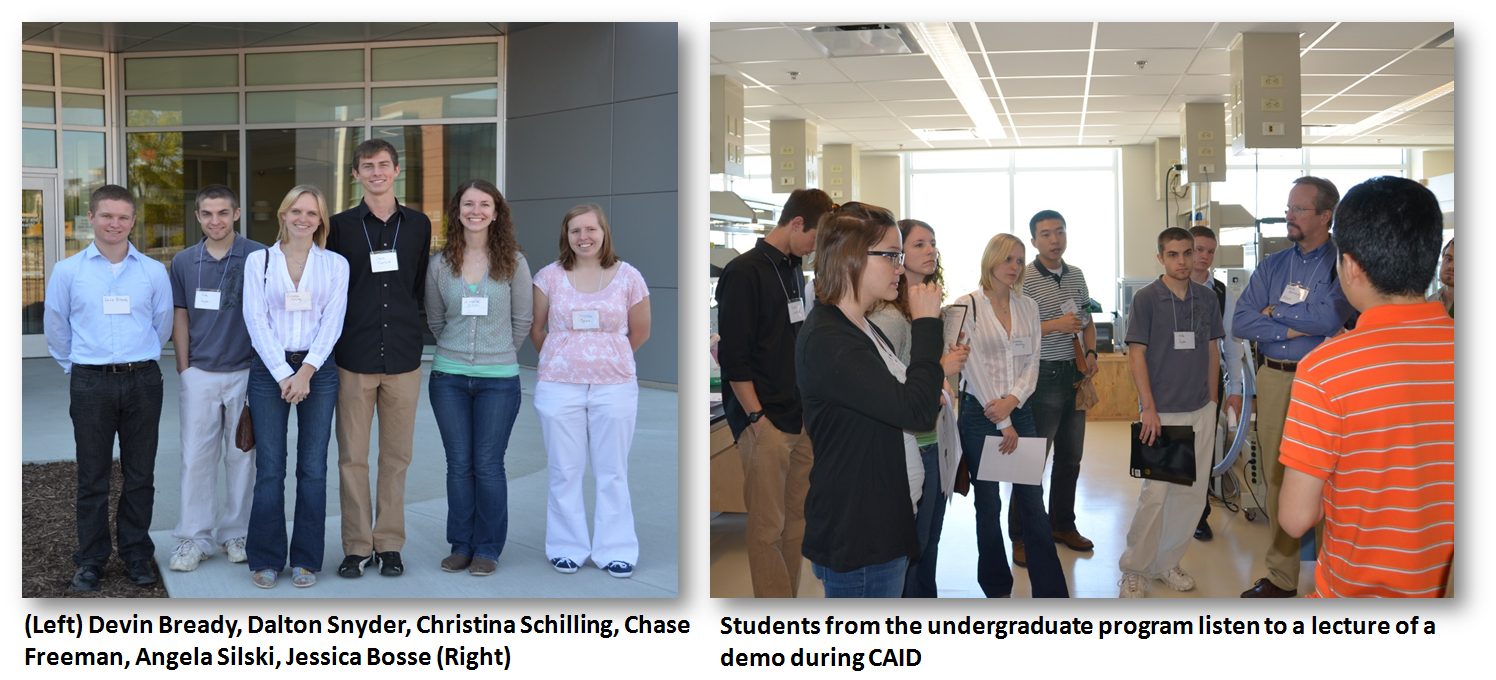Intensive Short Course on Mass Spectrometry for Undergraduates
September 2013
WEST LAFAYETTE, Ind.--Reported by Kassandra Moore. Synthesis by Mass Spectrometry--During the two-day short course, undergraduates from different universities performed a traditional bulk phase reaction and preparative mass spectrometry via paperspray in a laboratory setting.

Experiments
Three organic reactions, Claisen-Schmidt base-catalyzed condensation, Hantsch synthesis of symmetric dihydropyridines, and Girard's reagent T condensation with hydrocortisone, were performed in both a bulk reaction and via the accelerated mass spectrometry method of paperspray. The reaction in bulk took approximately 30 minutes for completion in comparison to a few seconds via paperspray. Micro-droplets from the paperspray produce product due to le Chatlier's Principle, while in bulk reaction there are no micro-droplets formed. Students also adapted fruit spray from a previous experiment performed in Aston Labs, where they sprayed directly from the fruit into the instrument.

Sunday, September 22
A short introduction to the intensive short course was given. Students performed the three bulk phase reactions and preparative mass spectrometry via paperspray. Discussion of the history of mass spectrometry and where we are today was given by Professor R. Graham Cooks. Fruit spray was also analyzed to detect different types of produce. Students were given an unknown mixture of two compounds, where they analyzed the solution via paperspray and used the spectra to determine the two chemical compounds in the mixture.
Monday, September 23
A tour of Aston Labs was given after breakfast with the graduate students. After touring the labs, the students observed a demo, Desorption Electrospray Ionization (DESI) Mass Spectrometry Imaging: A Practicum in Molecular Discrimination of Disease, given by fellow graduate student Kevin Kerian. After this demonstration, the students registered for the Center of Analytical Instrument Development (CAID), where a brief introduction was given by Professor R. Graham Cooks. Students participated in a variety of demonstrations, where faculty and employers from different universities and companies introduced new and innovative analytical techniques, focusing on personalized medicine.
Future Objectives
The short course is intended to grow as more students from different universities attend. The intention is to have students bring their own interesting experiments and reactions involving analytical instrumentation to share in a similar manner to CAID. Anyone interested in learning more about the undergraduate seminar can contact Brandy McMasters at mcmasters@purdue.edu.